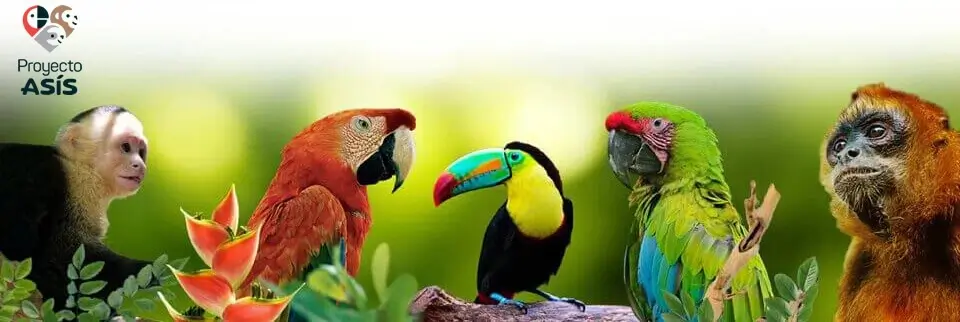The collared peccary (Pecari tajacu)—often mistaken for a wild pig—is actually a rugged, social mammal that plays a vital role in desert and forest ecosystems across the Americas. With its iconic “collar” of pale fur and fierce family bonds, this species is both fascinating and ecologically essential.
Other Common Names & Taxonomy
- Scientific Name: Pecari tajacu
- Other Names:
- Javelina (Southwestern U.S.)
- Musk hog
- Sahíno (Spanish)
- Queixada (Brazil)
- Taxonomy:
- Kingdom: Animalia
- Phylum: Chordata
- Class: Mammalia
- Order: Artiodactyla
- Family: Tayassuidae (peccaries, not pigs)
- Genus: Pecari
(Fun Fact: Despite their pig-like appearance, peccaries split from true pigs ~40 million years ago!)
Anatomical Characteristics: Built for Tough Terrain
- Size & Weight:
- Length: 80–100 cm (2.6–3.3 ft)
- Height: 30–50 cm (1–1.6 ft) at shoulder
- Weight: 14–30 kg (30–66 lbs)
- Distinctive Features:
- “Collar” of white fur around the neck
- Sharp, straight tusks (unlike curved pig tusks)
- Scent gland on the rump (used for marking territory)
- Coarse, bristly fur (gray to blackish-brown)
- Adaptations:
- Tough snout for rooting in hard soil
- Excellent sense of smell (poor eyesight)
Conservation Status: Holding Steady (For Now)
- IUCN Status: Least Concern (LC)
- Regional Threats:
- Hunted for meat and hides in parts of Latin America
- Habitat fragmentation in the U.S. Southwest
- Protected Areas: Thrives in national parks like Big Bend (Texas) and the Sonoran Desert.
Biology & Ecology: The Ultimate Survivor
- Diet: Omnivorous but mostly herbivorous:
- Cacti (especially prickly pear!), roots, fruits, nuts
- Occasional insects, small vertebrates, or carrion
- Behavior:
- Highly social—lives in herds of 6–30 (led by dominant females)
- Defensive: Forms a united front against predators (coyotes, pumas)
- Vocal: Grunts, squeals, and tooth-chattering to communicate
- Ecological Role:
- Seed disperser for desert plants
- Prey for large carnivores
Population Trend: Stable but Locally Vulnerable
- Global Population: ~5 million (estimated)
- Declines in:
- Urbanized areas of Arizona/Texas (roadkill, habitat loss)
- Northern Mexico (overhunting)
- Expanding in: Some South American regions due to reforestation
Geographical Distribution: Where Do They Roam?
- Native Range: Southwestern U.S. through Central America to Argentina
- Habitats:
- Deserts (Sonoran, Chihuahuan)
- Tropical forests (Amazon, Yucatán)
- Scrublands (Caatinga in Brazil)
- Countries: U.S. (AZ, TX, NM), Mexico, Brazil, Costa Rica, Paraguay
Threats to Survival: Human Conflicts
1️⃣ Habitat Loss (urban sprawl, agriculture)
2️⃣ Hunting (for meat, sport, or retaliatory killings)
3️⃣ Roadkill (major cause of death in the U.S. Southwest)
4️⃣ Climate Change (drought reduces food/water availability)
Reproductive Cycle: Strong Family Bonds
- Mating Season: Year-round (peaks in rainy seasons)
- Gestation: 145–155 days (~5 months)
- Litter Size: 1–4 young (usually 2–3)
- Maternal Care:
- Piglets (“reds” for their color) follow mom within hours of birth
- Weaned at 2–3 months
- Stay with the herd for 6–12 months
- Sexual Maturity: Females at 8–14 months, males at 11 months
- Lifespan: 8–10 years in wild, up to 24 years in captivity
How Can We Help Protect Collared Peccaries?
✅ Support habitat corridors to reduce roadkill.
✅ Advocate for sustainable hunting laws in Latin America.
✅ Keep wildlife wild—never feed javelinas (they lose fear of humans).
✅ Donate to conservation groups like the Arizona-Sonora Desert Museum.
Collared peccaries are more than just tough survivors—they’re ecosystem engineers, shaping landscapes from deserts to rainforests. While still widespread, local declines remind us that even resilient species need protection.
Did you learn something new? Share this post to spread peccary pride! 🐗💨



































You must be logged in to post a comment.